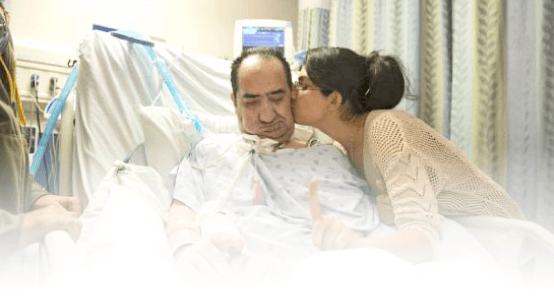Podcast: Play in new window | Download
Subscribe: Apple Podcasts | RSS
Hi, it’s Patrik Hutzel from intensivecarehotline.com with another quick tip for families in intensive care.
So Angela has a question today and she says, what happens if you place a person on a ventilator too soon or before it’s critically needed?
Now, that’s a great and also timely question especially in the current environment with COVID. Let me break this down for you.
So generally speaking, there are criteria that need to be made, boxes that need to be ticked before you place someone on a ventilator in intensive care. And I’m not going into too much detail now, but there are boxes that need to be ticked such as an arterial blood gas needs to be looked at. Is PO2 (partial pressure of oxygen) low? Is PCO2 (partial pressure of carbon dioxide) high? What support is a patient already on like high-flow nasal prongs, high-flow nasal oxygen, BiPAP or CPAP ventilation. Is the person potentially on ECMO? Are they proned already?
So there’s a number of issues that need to be looked at when someone needs to be placed on a ventilator. A number of people in intensive care also ended up on a ventilator after surgery, for example. So they start out in the operating room, in the operating theater and part of their recovery process is to stay on a ventilator for a few hours for a few days, it depends.
But coming to the second part of the question, what happens if it’s before critically needed? And this is a very timely question at the moment. So here’s what’s happening in the current environment.
Some ICUs have developed policies to intubate a patient and put them on a ventilator with the breathing tube if they’re above 6 liters of oxygen. Now, why is that? So when someone is on above six liters of oxygen, and I should say above six liters of oxygen and has COVID, that combination, and has COVID. So what happens is with COVID, if you put for example, a critically ill patient with COVID above six liters of oxygen on high flow nasal prong, or BiPAP or CPAP without a breathing tube, the risk of COVID spreading in the air is high. High risk to the staff, even though the staff are getting better at protecting themselves with PPE, N95 or P2 masks, face shields, and so forth, the risk is still there for staff to get infected. So therefore some patients or somebody might actually say that putting a patient or a COVID patient on ventilation with six liters or more of oxygen is too early, especially if their blood gases are still okay.
So therefore what happens next then if someone gets on a ventilator that, pre-pandemic and pre-COVID would not have been put on a ventilator, would have been treated with high flow oxygen with BiPAP or CPAP ventilation first, depending on the circumstances, so what happens then? So in a situation like that, if somebody gets intubated earlier, then normally they end up being in an induced coma and an induced coma has several undesired side effects, that I’ve written about and made videos about extensively. So you could look that up. If you go to our website intensivecarehotline.com and you type in induced coma, waking up, or side effects from an induced coma. So you can find all of that. But the main issue here is the undesired side effects of an induced coma. There could be delays in waking up deconditioning, muscle wastage, muscle weakness, psychosis, delirium, and the list goes on. That is probably the biggest concern out of it all.
So I hope that sums it up and answers your question, Angela.
That’s my quick tip for today.
If you have a loved one in intensive care, go to intensivecarehotline.com. Call us on one of the numbers on the top of our website, or send us an email to [email protected].
If you like this video, give it a thumbs up. Subscribe to my YouTube channel for updates for families in intensive care and comment below what you want to see next, or what insights you have from this video and click the notification bell.
This is Patrik Hutzel from intensivecarehotline.com and I’ll talk to you in a few days.



